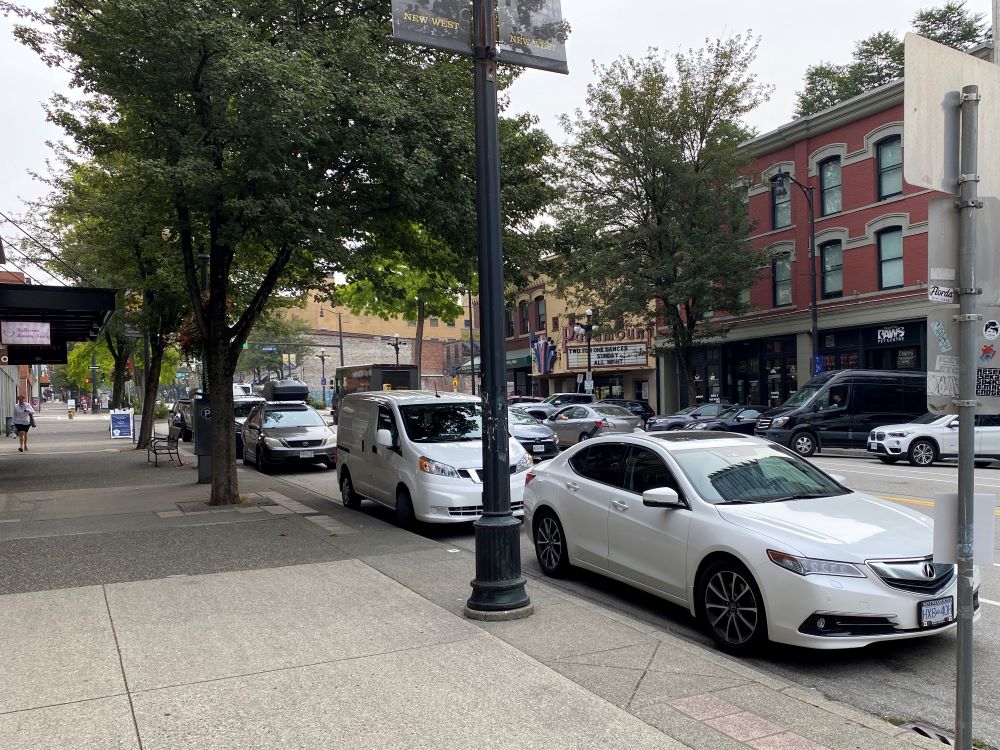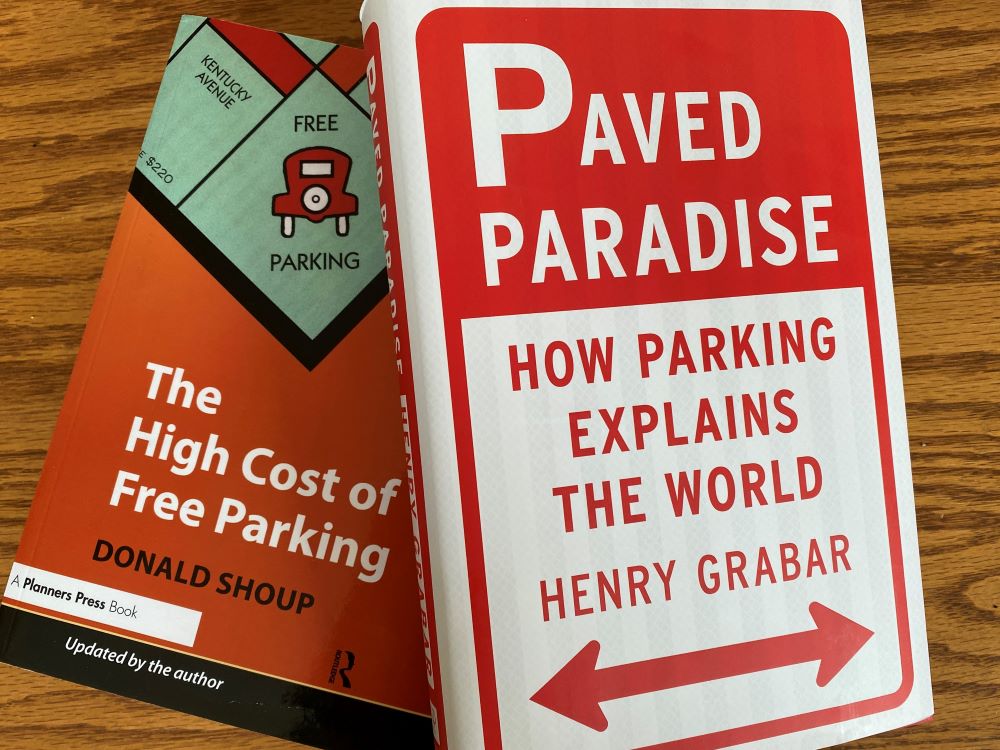The second item from last Council Meeting I promised a follow up on deserves a deeper dive for a very different reason than the last. In this case, the public policy and outcomes are comparatively simple to understand, even if for some they are counter-intuitive.
There was a motion brought to Council that would not only cost the City significant revenue on the order of $1 Million, but also stands in contrast to our City’s Official Community Plan, Master Transportation Plan, Downtown Parking Strategy, the recently-adopted Retail Strategy, our Climate Action goals, and various other city policies.
Under the guise of “supporting local business”, the proposal was to provide free street parking for an hour in all business areas, expand free evening parking, and make parking free on Sundays. Besides taking a significant chunk out of our parking revenue (which would presumably need to be offset by Property Tax increases), there is simply no evidence that free street-parking initiatives like this help local retail businesses in urban communities like New Westminster. The studies have been done, the evidence does not exist. The idea of free street parking may be populist, but it won’t work.
It’s not just me saying this, and nothing makes New Westminster unique here. I like to paraphrase/quote Donald Shoup, the acknowledged global expert on exactly this topic and author of “The High Price of Free Parking” when he says the curb lane on a commercial street is some of the most valuable land in any city. It is the biggest mistake a city can make to take that most valuable land and give it away, for free, to cars. Underpriced street parking drives traffic congestion, it drives emissions, and it makes a place less pedestrian friendly. It also, ironically, acts to make parking less available and harms the businesses it purports to serve.
Like most things involving cars, free parking works great until everyone wants to use it. This is because cars are massive consumers of space compared to their utility when compared to any other mode. You can have abundant available parking or you can have free parking, you cannot have both without turning the majority of your public space into parking lots. This works (at abhorrent cost) at suburban malls, but in dense urban city centres, the space simply doesn’t exist to make it work without loss of all of the things that make a community walkable and livable.
This is why the City of New Westminster, much like Vancouver and other modern cities, work to adjust commercial street parking rates based on needs assessments and the principle that correctly priced parking makes it more available for critical users, and properly prioritizes it in the hierarchy of needs for that most valuable curbside real estate.
In practice, this means setting a price for street parking that is higher than adjacent off-street parking. If street parking if free or too low priced, it will immediately be overwhelmed, and the off-street parking that was expensive to build and maintain will be underutilized. Ideally, on-street parking prices should be set so about 15% of spaces are open at any given time. Price it too low and people will circle the blocks in frustration not being able to find parking. When this motion first appeared in our Council agendas, I went down to Columbia Street on a regular Friday afternoon to see where our parking utilization rate was. I found about one empty parking space per block – or about 90% utilization. This is of course anecdotal, but there was no sign that pricing is out of scale with idealized price. This is because the price is based on a well-developed and evidence-based policy.
The City spent significant time putting together an updated parking pricing policy in 2019, including consultation with the business community, and that policy clearly lays out priorities and goals of the community, and sets a pricing policy to move us towards those goals over a 5-year implementation period. Let me quote from that October 2019 policy document:
“On-street vehicle parking is a valuable resource in urbanized communities, especially in commercial districts, around major institutions, and near rapid transit stations. Like other economic goods, when parking supply and pricing are not managed, demand for on-street parking often exceeds the amount of street space available. Complicating this issue is the growing demand for existing and potential designated curbside uses, such as transit stops and priority measures, taxi and ride-hailing zones, loading zones, accessible parking, car-share parking, protected bike lanes and bike parking, bike-share and other shared micromobility docking areas, parklets, and so forth. These uses – all of which are consistent with the City’s sustainable transportation and other goals – will continue to constrain the finite supply of onstreet space for the storage of personal vehicles.”
But our parking pricing strategy does not exist in a vacuum. It builds on the principles of the Official Community Plan, the Master Transportation Plan, the City’s Downtown Parking Strategy, our Community Energy and Emissions Plan, and other city policies. All of these are undermined by an arbitrary motion that re-prices this valuable public resource on a whim or a political promise.
In my opinion, this motion only represent bad public policy, it is regressive public policy that will (and this is actually the bigger point) not achieve the goals it claims to seek. I was not able to support it, nor was the majority of Council.
It is perhaps a coincidence that this motion arrived at Council as I was finishing reading a great book on this topic. Not Donald Shoup’s bible of parking policy, but Henry Grabar’s “Paved Paradise” which somehow makes the discussion of parking policy interesting and funny. The subtitle claims that parking explains the world we live in, and as you read he clearly makes the case that “parking is the primary determinant of the way the place you live looks, feels, and functions”.
We have work to do to make our curb spaces work better in Downtown New West, Sapperton, and Uptown. This work is ongoing through updates to our Master transportation Plan with a new area of focus on “curbside management”. We need to create better accessible parking for those who require accessible spaces, we need to change our pick-up/drop-off spaces to recognize the new emphasis on direct good and food delivery, we need to finds c at the curb for new mobility, for improved transit efficiency, for placemaking. This work will help businesses in our business districts, and it will help our residents better and more safely connect with those businesses. This is where the where the good public policy that supports local businesses is found. Alas, it doesn’t have the populist cachet of “free parking!”
Something that would help with parking AND help visitors to see shop fronts, is limiting the bloat of vehicles. Many of today’s vehicles are extra tall and long SUV’s/Trucks. Taking up way too much space for sole occupant inside. While obstructing sight lines of store fronts